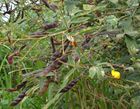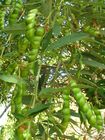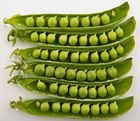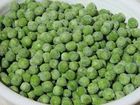Note: This is a project under development. The articles on this wiki are just being initiated and broadly incomplete. You can Help creating new pages.
Difference between revisions of "Trichodesma indicum - Adhapuspi, Indian Borage"
(→Common names) |
(→Parts Used) |
||
| Line 7: | Line 7: | ||
==Parts Used== | ==Parts Used== | ||
| − | {{Parts Used| | + | {{Parts Used|Whole plant}}, {{Parts Used|Roots}}, {{Parts Used|Leaves}}. |
==Chemical Composition== | ==Chemical Composition== | ||
Revision as of 10:20, 4 April 2018
Adhakpuspi is an Indian medicinal plant found in the Indian subcontinent. These are widely distributed as a weed throughout India. They grow to an altitude of about 1500 m in the Himalayas and it is used as a fertiliser and as an herbal medicine.
Contents
Uses
Arthritis, Anorexia, Dysentery, Skin dise.
Parts Used
Chemical Composition
Chemical constituent investigations have indicated that Cajanus cajan leaves are rich in flavonoids and stilbenes. They also contain saponins, conspicuous amount of tannins, and moderate quantities of reducing sugars, resins and terpenoid.[1]
Common names
| Language | Common name |
|---|---|
| Kannada | Athomukhi, Kattetumbesoppu |
| Hindi | Anadhahuli, Chotakulpha |
| Malayalam | Kilukkamtumpa |
| Tamil | Kulittaitumpai, Kallutaitumpai |
| Telugu | Guvagatti |
| Marathi | NA |
| Gujarathi | NA |
| Punjabi | NA |
| Kashmiri | NA |
| Sanskrit | Adhapushpi |
| English | Indian Borage |
,
Habit
Identification
Leaf
| Kind | Shape | Feature |
|---|---|---|
| Simple | tri-foliolate,lanceolate | Leafs are 2.5-13.5 cm long to 1-5.5 cm wide. The leaflets are green above and a silvery grey-green beneath and are covered on their lower surfaces in small yellow glands |
.[2]
Flower
| Type | Size | Color and composition | Stamen | More information |
|---|---|---|---|---|
| Unisexual | 14cm long | yellow, papilionaceous | Typical of species belonging to the Leguminosae subfamily Papilionoideae, and resemble, for example, the pea ( Pisum sativum ) flower. Each flower has 10 stamens, 9 of which are fused into a partial tube, with the tenth stamen free. The ovary is positioned above the sepals, petals and stamens. The style is curved | {{{5}}} |
.
Fruit
| Type | Size | Mass | Appearance | Seeds | More information |
|---|---|---|---|---|---|
| straight or sickle | 2-13 cm long x 0.5-1.5 cm | The seeds are 4-9 mm x 3-8 mm and can be white, brown, purplish, black or mottled.
|
seeds many | {{{5}}} | {{{6}}} |
Other features
List of Ayurvedic medicine in which the herb is used
- Vishatinduka Taila as root juice extract
Where to get the saplings
Mode of Propagation
How to plant/cultivate
Seed germinate in about 2 weeks. Quite frequently (in India) pigeon pea is grown mixed with other crops or grown in alternate rows with rows of sorghum, groundnuts, sesame, cotton, pineapples, millets or maize.For pure crops pigeon pea should be sown 2.5–5 cm deep in rows 40–120 cm by 30–60 cm.About 3–4 seeds may be planted in each hill, and later thinned to 2 plants per hill. About 3–4 seeds may be planted in each hill, and later thinned to 2 plants per hill. Plants show little response to fertilizers.[3]
Commonly seen growing in areas
Himalayas, Cultivated fields, Dry stony wastelands, Black cotton soil.
Photo Gallery
References
External Links
- Ayurvedic Herbs known to be helpful to treat Arthritis
- Ayurvedic Herbs known to be helpful to treat Anorexia
- Ayurvedic Herbs known to be helpful to treat Dysentery
- Ayurvedic Herbs known to be helpful to treat Skin dise
- Herbs with Whole plant used in medicine
- Herbs with Roots used in medicine
- Herbs with Leaves used in medicine
- Herbs with common name in Kannada
- Herbs with common name in Hindi
- Herbs with common name in Malayalam
- Herbs with common name in Tamil
- Herbs with common name in Telugu
- Herbs with common name in Sanskrit
- Herbs with common name in English
- Habit - A small erect shrub
- Index of Plants which can be propagated by Seeds
- Index of Plants which can be propagated by Cuttung
- Herbs that are commonly seen in the region of Himalayas
- Herbs that are commonly seen in the region of Cultivated fields
- Herbs that are commonly seen in the region of Dry stony wastelands
- Herbs that are commonly seen in the region of Black cotton soil
- Herbs





